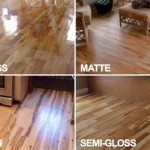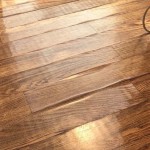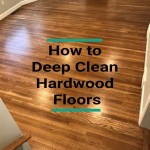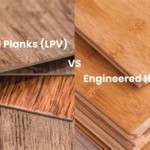Is Pine Sol Suitable for Wood Floors? A Comprehensive Guide
The question of whether Pine Sol is an appropriate cleaning agent for wood floors is a subject of ongoing debate. Wood flooring, prized for its aesthetic appeal and durability, requires specific care to maintain its condition and longevity. Pine Sol, a popular household cleaner known for its disinfecting and deodorizing properties, contains ingredients that may or may not be compatible with the delicate nature of wood. This article aims to provide a comprehensive analysis of the potential effects of Pine Sol on wood floors, exploring the relevant factors and offering guidance on alternative cleaning methods.
Wood floors are susceptible to damage from a variety of elements, including excessive moisture, abrasive cleaners, and improper application techniques. The finish applied to the wood surface, which can range from polyurethane to wax, serves as a protective barrier. This barrier is crucial in preventing the wood itself from absorbing moisture and becoming stained or warped. Therefore, the choice of cleaning product must be carefully considered to avoid compromising the integrity of this protective finish.
Understanding Pine Sol's Composition and Potential Effects
Pine Sol’s cleaning power derives from its formulation, which typically includes pine oil, surfactants (detergents), solvents, and chelating agents. These components work together to dissolve grease, lift dirt, and disinfect surfaces. The pine oil contributes to the characteristic scent and is believed to have some antimicrobial properties. However, the other ingredients, particularly the solvents and surfactants, can pose a threat to the finish on wood floors.
Solvents are often included in cleaning products to help dissolve stubborn stains and residues. While effective at removing grime, solvents can also dissolve or degrade certain types of wood floor finishes, especially older wax-based or shellac finishes. The result can be a dull, sticky, or even discolored surface. Surfactants, which lower the surface tension of water, facilitate the removal of dirt and grease. However, some surfactants can be harsh and may strip away the protective oils from the wood, leading to dryness and cracking over time.
The pH level of a cleaning solution is another important consideration. Products with a high pH (alkaline) or a low pH (acidic) can potentially damage wood floor finishes. Wood itself is naturally slightly acidic, and while Pine Sol is generally considered to be relatively neutral, its effects can vary depending on the concentration used and the type of finish on the floor. Frequent use of Pine Sol, even in diluted form, could gradually erode the finish and leave the wood vulnerable to damage.
Furthermore, the water content in a cleaning solution plays a significant role. Excessive water exposure is detrimental to wood floors, as it can seep into the seams and cause the wood to swell, warp, or even rot. While Pine Sol is typically diluted with water before use, it is crucial to minimize the amount of water applied to the floor during the cleaning process. A damp mop is preferable to a soaking wet one.
Factors to Consider Before Using Pine Sol on Wood Floors
Before using Pine Sol on wood floors, several factors should be carefully evaluated. These factors include the type of finish on the floor, the age of the floor, the frequency of cleaning, and the concentration of Pine Sol used. Understanding these variables can help determine the potential risks and benefits of using Pine Sol as a cleaning agent.
Identifying the type of finish on the floor is paramount. Polyurethane finishes are generally more resistant to chemical damage than older wax-based or shellac finishes. If the floor has a polyurethane finish, it is slightly more likely to tolerate the occasional use of diluted Pine Sol. However, it is still crucial to test the product in an inconspicuous area before cleaning the entire floor. For floors with older finishes, it is generally advisable to avoid using Pine Sol altogether and opt for a gentler, wood-specific cleaner.
The age of the floor also influences its susceptibility to damage. Older floors are often more delicate and may have undergone previous repairs or refinishing. The finish on an older floor may be more worn or compromised, making it more vulnerable to the harsh chemicals in Pine Sol. Similarly, floors that have been recently refinished may be particularly sensitive to cleaning products, as the finish may not have fully cured.
The frequency of cleaning is another important consideration. Even if Pine Sol appears to be safe for occasional use, frequent cleaning with this product can potentially lead to long-term damage. Over time, the cumulative effect of exposure to solvents and surfactants can weaken the finish and make the floor more susceptible to scratches, stains, and moisture damage. A regular cleaning routine with a mild, pH-neutral cleaner designed specifically for wood floors is generally preferable.
Finally, the concentration of Pine Sol used is crucial. Always follow the manufacturer's instructions for dilution and avoid using excessive amounts of product. Using a more concentrated solution increases the risk of damaging the finish and leaving a residue that can attract dirt and dull the shine of the floor. Start with a very dilute solution and test it in an inconspicuous area before proceeding.
Alternatives to Pine Sol for Cleaning Wood Floors
Given the potential risks associated with using Pine Sol on wood floors, it is prudent to explore alternative cleaning methods that are safer and more effective. Several commercially available wood floor cleaners are specifically formulated to protect and enhance the beauty of wood floors without causing damage. In addition, some simple homemade solutions can provide effective cleaning without the harsh chemicals found in Pine Sol.
Commercially available wood floor cleaners typically contain ingredients that are gentle on wood finishes and help to maintain the natural luster of the wood. Look for products that are pH-neutral and specifically labeled for use on wood floors. These cleaners often contain ingredients that help to moisturize the wood and prevent it from drying out and cracking. It is important to follow the manufacturer's instructions carefully and avoid using excessive amounts of product.
Homemade cleaning solutions can also be effective and environmentally friendly. One simple and popular solution is a mixture of water and white vinegar. Vinegar is a natural disinfectant and can help to remove dirt and grime without damaging the finish. However, it is important to use vinegar sparingly, as excessive acidity can dull the finish over time. A ratio of one part vinegar to ten parts water is generally recommended.
Another option is a solution of water and mild dish soap. Choose a dish soap that is pH-neutral and free of harsh chemicals. Use only a small amount of soap, as excessive suds can leave a residue on the floor. Be sure to rinse the floor thoroughly with clean water after cleaning with soap and water.
Regardless of the cleaning solution used, it is important to use a damp mop rather than a soaking wet one. Excess water can seep into the seams of the floor and cause damage. Wring the mop thoroughly before applying it to the floor. After cleaning, dry the floor with a clean, dry cloth to remove any residual moisture.
Finally, preventative measures can significantly reduce the need for frequent cleaning. Place mats at entrances to trap dirt and debris before they are tracked onto the floor. Sweep or vacuum the floor regularly to remove loose dirt and dust. Use furniture pads to protect the floor from scratches and dents. By taking these simple steps, the frequency of cleaning can be reduced, minimizing the risk of damage to the wood floor finish.

Can You Use Pine Sol On Wood Floors Tidy Floor Jahidul Alam Youtube

Wood Cleaners To Avoid For Your Flooring Recoat Revolution

How To Clean Hardwood Floors With Pine Sol

Can You Use Pine Sol On Wood Floors Homelyville

How To Clean Mop Laminate Floors Without Leaving

Pine Sol Multi Surface Floor Cleaner Original 20 Fluid Ounces

Is Pine Sol Good For Hardwood Floors Benefits And Tips Trade Flooring Uk

How To Clean Wood Furniture With Pine Sol

Is Pine Sol Good For Hardwood Floors Benefits And Tips Trade Flooring Uk

Fabuloso Vs Pine Sol What S The Difference Prudent Reviews







